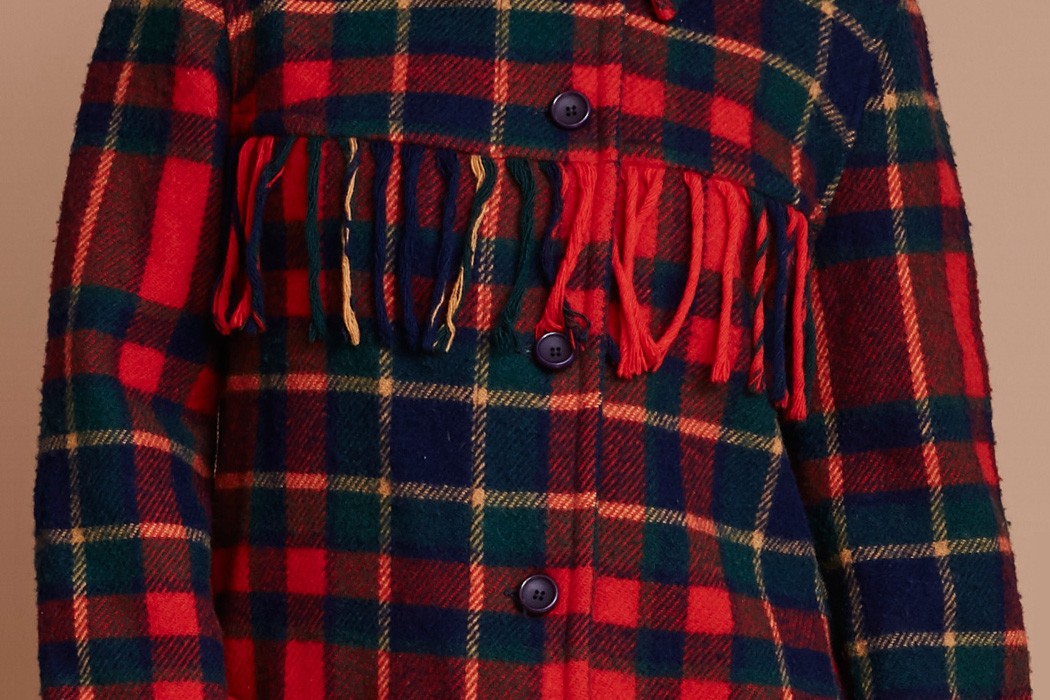Editor’s note: Each Thursday, we feature a throwback piece from Topology’s predecessor, catapult magazine. In this essay, Neil Das ponders lost connections, of both the human and the wooly, plaid kind.
If I did an inventory I think that well over 75% of my wardrobe—to which I give more attention than I am willing to admit—was first part of someone else’s wardrobe and only became mine through the agency of a thrift store. Think not so much hipster chic, but rather an updated version of the tweedy, wooly, corduroy-ey wardrobe of a C.S. Lewis: Brooks Brothers meets Hobbit meets guybrarian. And as for my books and music collection, well, I’d say the percentages are likely 90 and 80 respectively, bearing in mind that 80% of statistics are entirely made up on the spot. Furniture: 100%, enough pieces to fill a six-bedroom, 100-year old beauty in the West End of St. Louis. Kitchen utensils? Okay, IKEA gets a lot of love on that score.
But the cultivation of a shabby-chic sartorial style and a quirky aesthetic feng shui almost exclusively by shopping at thrift stores takes a lot of work. Indeed, one might legitimately ask if it is really an efficient way to go about furnishing a life at all, or even a particularly thrifty way. To which the answer is both an emphatic “yes” and “no.” There really is no doubt that thrifting can save money, and a lot of it, but as for efficiency, well, that is more subjective. If one is willing to wait to find something that is desired or needed at good price, or when shopping for optional items like extra clothes or Halloween costumes or pictures frames—the list is endless—there is certainly efficiency in the savings to be had at a thrift store. And if your means are so basic that there are no other options, well, obviously they are a good fit as well.
But, truth be told, some of us are really what might be described most accurately as “lifestyle thrifters.” We shop thrift stores not simply for economic reasons, but because we are drawn by the bargain, by the possibilities, which are as varied as the fashions shoved together on the clothes racks, or the mismatched china pieces next to the bric-a-brac section. I mean where else do we even use the word bric-a-brac anymore? And there are levels of commitment here: folks who will buy knickknacks or CDs, but not clothing; folks who will buy clothing, but not shoes; folks who will buy shoes, but not swimsuits—you get the picture. And for the record, I have never bought a swimsuit at a thrift store, even if I am a trunks and not a Speedos man.
For this type of shopper, questions of efficiency and, yes, even of thrift become far more personal and vexed. One can be as materialistic or wasteful in a thrift store as in a Neiman Marcus. More pointedly, the very reasons we shop are so often soaked through and through with emotion as opposed to need. The psychological need or emotion that a thrift store, or a Wal-Mart or a Restoration Hardware, may help sate need not be a negative one—but when it comes to wants and needs, we are in murky waters, in which we need to be wary of the truth that the heart is deceitful above all else.
I have given many a gift to a relative or friend which was first a joyous find in the aisles of a thrift store and which was gratefully received, creating a beautiful connection, but sometimes my experiences there are more negative. There have been times when I have been feeling depressed when I have wandered the aisles of a store in a sort of melancholy haze, shuffling up the aisles with my mind nowhere, looking for something to move my heart. This particular state of being is perhaps more a function of heredity and dysfunction, I know. My father once told me that he would be in the same sort of state sometimes when wandering in a Home Depot, not wanting to go home. And yet I cannot help but think that some variation of this state, this trying to feed the emotional or spiritual with the merely material often comes to bear in our shopping, whatever the context, high ticket or low, brick-and-mortar or online.
I was in one of these moods one Saturday this past autumn at the Salvation Army when I came upon the Pendleton coat. I never used to know what Christian singer Steve Taylor meant in the opening lines of his song “The Moshing Floor”:
Pendleton elbows
Stick in my craw
Old Doc Marten He made me say “aaaaw.”
I now suspect he was referring to plaid, woolen shirts or jackets worn by moshees, no matter what the temperature might be. Unlike the thought of those sweaty, mosh-beaten jackets, though, this was something altogether different. Made from wool, it was the texture, weight and length of a pea coat, but had a pattern of wide plaid woven with blue, muted ochre, red-mauve, and maybe green. It had a stylishly cut hood and large wooden-style buttons like the ones that you might find on a man’s tweed sport coat and a shiny navy lining. It was a woman’s coat and only $3.99! It is a little embarrassing to catalog the thoughts and emotions that this coat created in me as I checked it out, but I am already in for a penny, so I may as well go ahead and be in for the pound.
First, if I were to see a woman who was wearing this Pendleton coat on the street or in a coffee shop, I would almost certainly turn my head, and that perhaps tells most of the story; and beginning to mull over for whom I might buy it pretty much tells the rest of it. I sized up mental images of several nieces, who would look as cute as the coat’s brown buttons if they wore it, but it would take several years of closet hanging before they could even use it. Then came the tricky bit, as I flipped through the mental rolodex of my close female friends—my mental office space is antiquated it seems—and looked for a match. I was like the prince wandering the city with that glass slipper. I might have convinced myself that it would be okay to give it to someone because I would simply be passing along an awesome find, which would be true enough, and it need have nothing to do with finding a match at all—at least not that sort of match. But good gift giver that I am, it has still taken me a long time to learn how to give the really good gifts, gifts that are thoughtful and true, with clear intentions, which sometimes means not giving the gift at all.
And so I continued shopping while the coat sat in the bottom of the cart, often catching my eye and troubling my heart. In the end I did what, to my credit, I have done at least a few other times in my thrift store shopping career as well. I willfully chose to leave it for another, trying to imagine a stranger’s sense of delight at finding it. And, as if to strengthen my choice, I did not wedge it on the rack it to disappear amongst some larger coats, but rather I pegged it right on end of a section to shine out with all its plaid cuteness to catch someone’s eye.
And that would really be the end of the story, if, that is, I did not feel the compelling need to go back to the very same Salvation Army again that Monday after work, you know, to get some more of those mugs which came in so handy for the hayride on Saturday. Did I look for the coat? Can a leopard change his spots? I am ashamed to say I most certainly did, going over the coat section again and again, poking in between the tightly bunched ones just to be certain that it was gone, as it surely was.
Ridiculous, you say? Perhaps. But I wish I had a picture to show you; it was one sweet coat. It is perhaps instructive that even though I had my camera with me that day—the Pendleton coat day—I did not actually take a picture of it, because sometimes losing the picture is all the better for the letting go.





